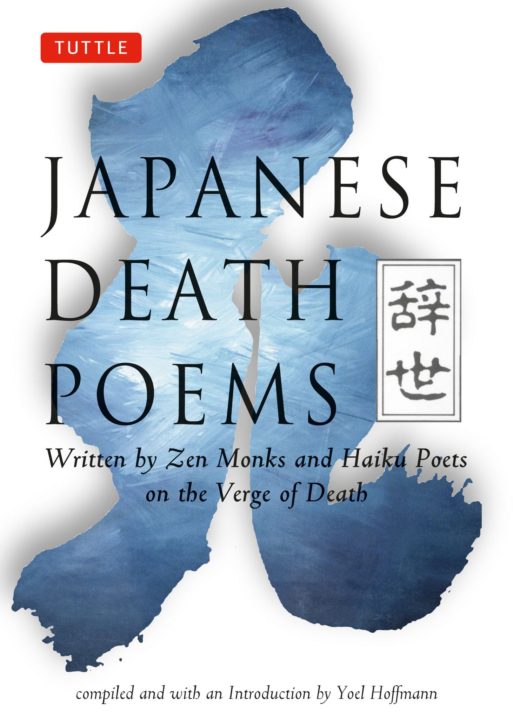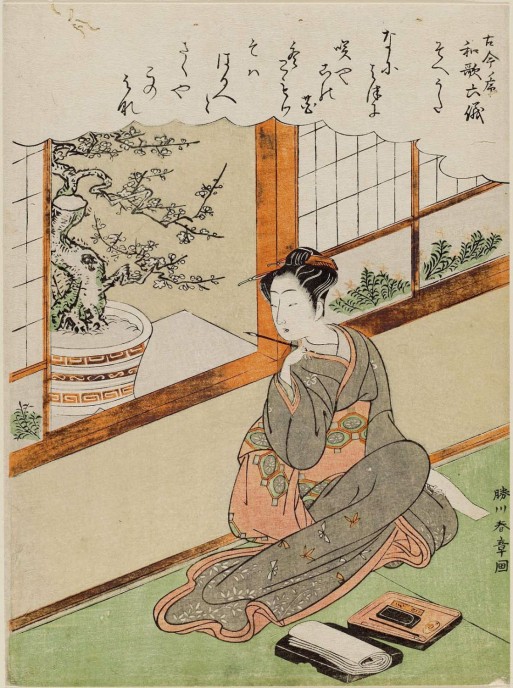 I’ve been fascinated by haiku ever since I first laid eyes on one. Their intrinsic nature is to elicit mystery swirling around their brevity of words.
I’ve been fascinated by haiku ever since I first laid eyes on one. Their intrinsic nature is to elicit mystery swirling around their brevity of words.
Not only are they the shortest poems known to mankind, haiku unfailingly evoke breathtaking images of man in relationship to nature. It’s the art of mentally transporting one, in so few words, to a place of unique beauty, overwhelmed by emotion and to feel the real elements of nature – the result is you can see, hear, taste and almost touch the place a haiku takes you to.
SEISA
Died on the seventeenth day of the sixth month, 1791 at the age of fifty-two
My body, useless
as the last persimmon
on the tree.
(Part 3, Death Poems by Haiku Poets)
Simply put, a haiku is a three-line poem with about nine words total (but this can vary). It is the number of syllables per line that is fixed (yet often violated) — a five-seven-five rhythmic syllable count. This cadence is lost when translated into English. A haiku always poetically evokes one image along with one event of nature’s four seasons. It’s a metaphor to that state of being, a profound moment, and what is more profound than death?
This is why the Japanese had the tradition of writing their own “farewell poem to life.” Additional to a will, “a death poem” was carefully crafted while still alive. While the Japanese are polite people, the politeness gives way, along with social standards, when it comes to their death haiku. Each verse becomes their personal legacy to spiritualism.
Over the years, I have rarely spotted haiku books. When I found this book of Japanese Death Poems, Written by Zen Monks and Haiku Poets on the Verge of Death, I snapped it up. This small, chunky hand-sized paperback begins with Part 1, an 88-page overview of the history of Japanese poems. It’s worth the read to unveil much of the mystery and follow the history of these potent-packed verses.
What I found to be quite amazing was how, in the early eighth century, pre-haiku verses called Man’yoshu were written by everyone — not just noblemen, warriors and monks, but common people too. There have been many evolutions of these short poems, including rengas (linked collective poetry) and tanks (31 syllables in five lines) to name a few.
Kaso Sodon
Died on the twenty-seventh day of the sixth month, 1428 at the age of seventy-seven
A drop of water freezes instantly–
My seven years and seventy.
All changes at a blow
Springs of water welling from the fire.
(Part 2, Death Poems by Zen Monks)
In Part 2 of this Japanese Death Poems book, the poems are by monks, and in the final Part 3, it’s all haiku death poems. The author makes a point of noting:
“It should perhaps be mentioned that there is no direct historical link between the early Zen monks whose Chinese poems are represented in Part Two of this book and the haiku poets of the sixteenth century onward, represented in Part Three. The attitude expressed by haiku poets, however, often reflects Zen Buddhist elements; indeed, many haiku poets took a deep interest in Zen Buddhism, some to the point of donning a robe and wandering up and down Japan begging rice from door to door, after the manner of Zen monks.”
HYAKKA
Died on the twentieth day of the second month, 1779 at the age of sixty-four
Late-blooming cherry:
wondrous workings
of a flower’s mind.
* * * *
Winter ice
melts into clean water–
clear is my heart.
(Part 3, Death Poems by Haiku Poets)
I could continue to wax about haiku, but have ended with the one above instead. It is a nice book, but not one of my favorites as to the selections of the actual haiku — many were not quite as visually stimulating to me. I like a haiku that transforms me in time and space, but others may enjoy such subtleties. If you desire to include haiku within your end-of-life experience, to read at the bedside of someone dying, or as part of the memorial service or in a book created for someone as a condolence gift, then this might be an option for you.
Take a look inside on Amazon here.

 Japanese Death Poems, Written by Zen Monks and Haiku Poets on the Verge of Death
Japanese Death Poems, Written by Zen Monks and Haiku Poets on the Verge of Death




 Passing of Beloved Comedian Births a New Comedy Festival
Passing of Beloved Comedian Births a New Comedy Festival

 The Spiritual Symbolism of Cardinals
The Spiritual Symbolism of Cardinals














